Chicago, IL 60601
FREE CONSULTATIONS 312-462-4200
TOLL FREE 833-462-4200
Recent Blog Posts
What Are the Signs That a Birth Injury May Have Led to Cerebral Palsy?

As a new parent, there are few things more important than your child's health. You want to give your child the best possible start in life, and that includes detecting any medical or developmental issues early on. Unfortunately, birth injuries can have a significant impact on your child's growth and development, and brain injuries that occur during labor and delivery can be especially serious. In many cases, issues that cause damage to a child's brain may lead to cerebral palsy, a developmental disorder that can result in permanent physical and mental disabilities. By understanding the signs and symptoms of cerebral palsy, you can make sure your child will receive the proper treatment.
Delayed Motor Development
Some of the most common signs that a birth injury may have led to cerebral palsy involve developmental delays. If a child does not meet certain milestones at the expected times, this may be an indication that they have a developmental disorder. In some cases, cerebral palsy may primarily affect one side of the body, causing a child to favor arms or legs on one side and limiting their ability to crawl or walk properly. If your child is unable to sit up or does not start crawling or walking after reaching the appropriate age, you may want to consult a doctor to determine the causes of these delays and the options for meeting your child's needs.
What Are the Most Common Causes of Post-Partum Hemorrhaging?
 The birth of a child is a beautiful and joyous occasion, but it is also one of the most physically demanding experiences that a woman can go through. After childbirth, it is common for women to experience some level of bleeding. However, when bleeding is excessive, this is known as post-partum hemorrhaging, and it can be a serious and potentially life-threatening issue. In fact, it is one of the leading causes of maternal mortality in the world. It is important for new parents to understand the potential causes of post-partum hemorrhage to ensure that this issue will be addressed correctly.
The birth of a child is a beautiful and joyous occasion, but it is also one of the most physically demanding experiences that a woman can go through. After childbirth, it is common for women to experience some level of bleeding. However, when bleeding is excessive, this is known as post-partum hemorrhaging, and it can be a serious and potentially life-threatening issue. In fact, it is one of the leading causes of maternal mortality in the world. It is important for new parents to understand the potential causes of post-partum hemorrhage to ensure that this issue will be addressed correctly.
Reasons Why Post-Partum Hemorrhaging May Occur
During pregnancy, a woman's body produces excess blood, and some of this blood will be lost during the child's delivery. However, blood flow may not stop naturally, and excessive bleeding could result in the loss of too much blood. Some common reasons for significant blood loss following childbirth include:
What Treatments Can Be Used for Infants With Cystic Encephalomalacia?
 There are multiple types of birth injuries that can affect newborn infants, and some of the most serious of these injuries may result in damage to the brain. Cystic encephalomalacia is one type of brain condition that may result in permanent disabilities and health issues. Parents of children who have been diagnosed with this type of brain injury will need to understand the options for treatment and the resources that may be available to ensure that they can meet their child's needs.
There are multiple types of birth injuries that can affect newborn infants, and some of the most serious of these injuries may result in damage to the brain. Cystic encephalomalacia is one type of brain condition that may result in permanent disabilities and health issues. Parents of children who have been diagnosed with this type of brain injury will need to understand the options for treatment and the resources that may be available to ensure that they can meet their child's needs.
Understanding Cystic Encephalomalacia
Cystic encephalomalacia is a condition characterized by the occurrence of cysts in the brain that are filled with cerebrospinal fluid. These cysts can occur for a variety of reasons, including trauma during birth, infections contracted by a child during pregnancy or delivery, maternal diabetes, or the use of certain types of medications during pregnancy, such as blood thinners. Brain injuries can also occur if a child experiences a lack of oxygen during labor and delivery, and if an infant experiences hypoxic ischemic encephalopathy, cysts may develop in the brain. In rare cases, cystic encephalomalacia may occur because of genetic disorders.
Is Unnecessary Treatment by Dr. Mona Ghosh Considered Medical Malpractice?
 Patients who receive care from doctors or other medical providers expect to be treated with dignity and respect. They believe that doctors will evaluate them based on thorough examinations and a consideration of their medical history, diagnose conditions based on their medical education and the knowledge they have gained from treating other patients, and recommend and provide treatments that will address a patient's conditions and improve their overall health. While most providers meet these expectations and provide quality care to patients, there are some situations where doctors may not provide the proper care, or they may even take actions meant to benefit themselves rather than protect the health and well-being of the people they treat.
Patients who receive care from doctors or other medical providers expect to be treated with dignity and respect. They believe that doctors will evaluate them based on thorough examinations and a consideration of their medical history, diagnose conditions based on their medical education and the knowledge they have gained from treating other patients, and recommend and provide treatments that will address a patient's conditions and improve their overall health. While most providers meet these expectations and provide quality care to patients, there are some situations where doctors may not provide the proper care, or they may even take actions meant to benefit themselves rather than protect the health and well-being of the people they treat.
A number of patients in the Chicago area may have been affected by this type of behavior. Dr. Mona Ghosh, who operated Progressive Women's Healthcare, S.C. in Hoffman Estates, has been accused of committing healthcare fraud by billing insurance providers for services that were not actually provided, as well as performing certain types of unnecessary procedures and tests, including endometrial ablations and endometrial biopsies. Patients who have received services from Dr. Ghosh may be concerned about how they may have been affected, and they will need to understand whether they can pursue medical malpractice claims.
Can Patients of Dr. Mona Ghosh Receive Compensation for Unnecessary Medical Treatment?
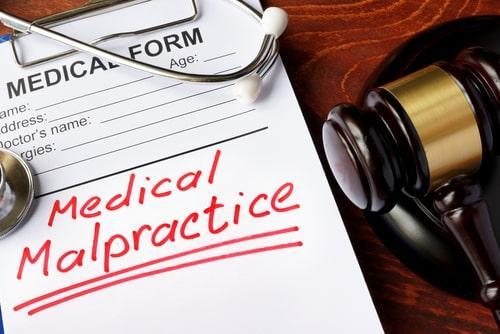
Recently, people in the Chicago area were shocked by the revelation that a women's healthcare provider had allegedly been committing healthcare fraud for several years. On March 14, 2023, a federal grand jury indicted Dr. Mona Ghosh on 13 counts of fraud. The doctor, who owned and operated a clinic in Hoffman Estates known as Progressive Women’s Healthcare, S.C., has been charged with submitting numerous false claims to private insurance providers and government programs such as Medicare and Medicaid. She is accused of obtaining nearly $800,000 in fraudulent payments.
While Dr. Ghosh may face serious penalties for committing fraud, what is even more troubling is how her alleged actions may have affected her patients. In addition to billing for services that were not actually provided, she is also accused of performing unnecessary medical treatments, including endometrial ablations and invasive tests such as endometrial biopsies and screenings for sexually transmitted diseases.
What Are the Most Common Causes of Brain Injuries During Childbirth?
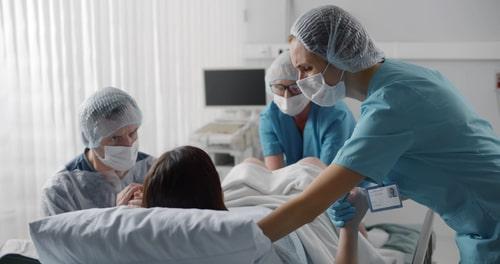
The birth of a child is supposed to be one of the most joyous occasions in life. However, for some families, it can also be a traumatic experience due to birth injuries that occur during labor and delivery. One of the most devastating injuries that can occur during birth is a brain injury. These injuries can have long-lasting effects on a child's development and quality of life, and they can potentially lead to long-lasting or permanent developmental disorders such as cerebral palsy. It is important for parents to understand the causes and risk factors associated with these injuries.
Issues That Can Increase the Risks of Brain Injuries During Labor and Delivery
There are multiple factors that may result in serious brain injuries for infants, including:
-
Lack of oxygen: One of the leading causes of brain injuries during childbirth is a lack of oxygen to the baby's brain. If the umbilical cord becomes compressed, if the placenta detaches from the uterine wall, or if there are problems with the baby's breathing or heart rate, oxygen deprivation may occur, resulting in permanent brain damage.
Rate of Maternal Deaths and Injuries in the U.S. Increases

The rate of maternal birth injuries in the United States is on the rise. This is a troubling trend, especially since the rate of maternal injuries and deaths in the U.S. was already much higher than in many other countries. For pregnant mothers and families who have been affected by these issues, it is important to understand what these injuries are, how they can be prevented, and what treatments are available.
Statistics About Maternal Injuries and Deaths
A recent report by the National Center for Health Statistics showed that in 2021, there were 1,205 deaths of pregnant women in the United States. This represented a large increase from 2020, which saw 861 deaths. However, this was also an increase from 754 deaths in 2019, which was around the average number of annual maternal deaths over the past few decades.
What Can Cause Sepsis During or After Childbirth?
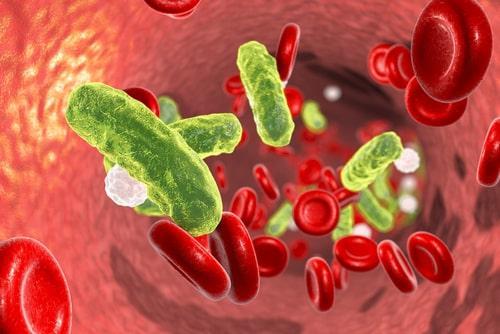
There are numerous health issues that can affect mothers and children during pregnancy, labor, and delivery. When birth injuries occur, they can have serious effects, and if the proper treatment is not provided as quickly as possible, they may result in wrongful death. Sepsis, a serious and potentially life-threatening condition that can occur during or after childbirth, is caused by an infection in the bloodstream, and it can be deadly if not properly treated. In fact, infections and sepsis are the second leading cause of pregnancy-related deaths, accounting for nearly 14 percent of all deaths. It is important for families to understand how sepsis occurs so that they can be informed and take the necessary steps to protect the life and health of a mother and her baby.
Can Meconium Aspiration During Childbirth Lead to Cerebral Palsy?
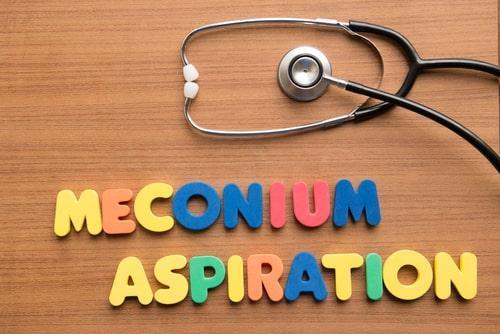
There are a variety of complications that can occur during pregnancy and childbirth. During labor and delivery, doctors and nurses must closely monitor a mother and quickly address any issues that could threaten the health of her or her child. Failure to diagnose and respond to potential risks could lead to injuries with long-term effects. Meconium aspiration is one issue that may occur during prolonged labor or traumatic delivery, and if not treated correctly, it could have permanent effects on a child's health, including the possibility that the child will develop cerebral palsy.
What Is Meconium Aspiration?
Meconium aspiration occurs when a baby inhales meconium, a black, sticky substance that is present in the intestines of all newborns. Meconium is composed of amniotic fluid, skin cells, and other fluids or particles that the baby ingests while in the womb. Meconium may pass out of the child's body while they are still in the womb and become mixed in with the amniotic fluid. The child may then inhale the meconium during labor and delivery. In many cases, meconium aspiration is not harmful and will not cause any long-term problems. However, in some cases, meconium aspiration can lead to cerebral palsy.
What Can Cause Cerebral Palsy During Pregnancy and Childbirth?
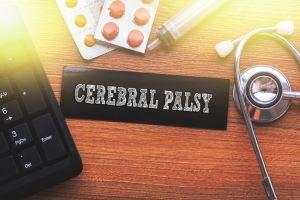
Although the process of carrying a pregnancy to term and delivering an infant is hardly unique, it is fraught with opportunities for complications and injuries to both the child and the mother. One of the most common outcomes of exposure to dangerous conditions during pregnancy and childbirth is cerebral palsy, a developmental disorder that varies in severity and can make it difficult for a child to develop normatively both physically and neurologically.
Many cases of cerebral palsy are congenital, but there are tragic cases that are the result of medical malpractice on the part of neonatal and delivery doctors, nurses, and anesthesiologists. Here are some of the most common avoidable causes of cerebral palsy during pregnancy and childbirth:
Untreated Infection and Fever
When a pregnant mother develops an infection, her body produces cytokines to fight the infection. Unfortunately, these can cause inflammation to the baby as well as the mother, leading to brain damage in the baby. A high fever can cause a similar reaction, which is why diagnosing and treating infections and fevers quickly and effectively is so important during pregnancy.





